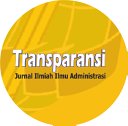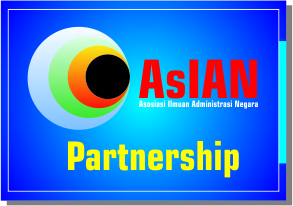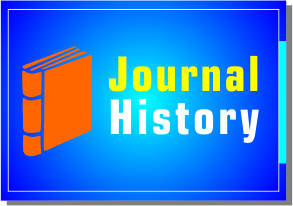Utopia Pengembangan Pariwisata Kabupaten Halmahera Utara
DOI:
https://doi.org/10.31334/transparansi.v8i1.4736Keywords:
Pengembangan, Pariwisata, Kebijakan, Strategi, Halmahera Utara, Development, Tourism, Policy, Strategy, North Halmahera,Abstract
(Tourism Development Utopia North Halmahera District) This study examines the development of tourism in North Halmahera Regency through regional clustering. The Tobelo cluster is directed toward marine tourism development, the Galela-Loloda cluster toward the development of lakes, hot springs, and waterfalls, and the Kao-Malifut cluster toward the development of heritage sites, specifically World War II Japanese historical relics. Through qualitative research methods, including observation, interviews, documentation, and data analysis, three indicators of achievement were identified: improved tourist destination infrastructure, effective and efficient marketing brands, and increased quality creative economy groups. Twenty tourism problems were found in three tourism development sectors. However, the development of tourism in North Halmahera Regency has experienced many obstacles due to the pandemic, such as neglected, damaged, dirty, and destroyed tourist infrastructure and a neglected tourist environment. Abstrak Penelitian ini mengkaji tentang pengembangan pariwisata di Kabupaten Halmahera Utara yang menggunakan pembagian klasterisasi wilayah yaitu klaster Tobelo yang diarahkan sebagai kawasan pengembangan wisata bahari, klaster Galela-Loloda yang diarahkan pada pengembangan Danau, Air Panas dan Air Terjun dan Kao-Malifut diarahkan pada pengembangan Heritage (Peninggalan Sejarah Jepang Perang Dunia II). Dengan menggunakan penelitian kualitatif yakni melalui pengamatan (observasi), wawancara, dan dokumentasi serta analisis data, maka di temukan tiga indikator capaian kajian ini, yakni penelitian ini mampu meningkatkan sarana prasarana destinasi wisata, meningkatkan brand pemasaran yang efektif dan efisien serta meningkatkan kelompok ekonomi kreatif yang berkualitas. Dalam kajian ini ditemukan dua puluh permasalahan pariwisata dari 3 sektor pengembangan pariwisata. Namun, akibat Pandemi Covid 19, pengembangan pariwisata Kabupaten Halmahera Utara mengalami banyak kendala, seperti sarana prasarana wisata tidak terurus, rusak, kotor, hancur dan lingkungan wisata tidak terurus.References
Admiranto, A. Gunawan. 2000. Tata Surya dan Alam Semesta. Yogyakarta: Kanisius
Arikunto, Suharsimi. 2006. Prosedur Penelitian Suatu Pendekatan Praktik. Yogyakarta: Rineka Cipta.
Bungin, Burhan. 2008. Analisis Data Penelitian Kualitatif. Jakarta: Raja Grafindo Persada.
Edgell, D. L, International Tourism Policy, New York: Van Nostrand Reinhold, 1990.
Ernawati, dkk. 2009. Asuhan Keperawatan Pasien Dengan Gangguan Jiwa. Jakarta: Trans Info.
Faisal, Sanapiah. 1990. Penelitian Kualitatif (dasar-dasar dan aplikasi). Malang: Ya3 Malang. Hamidi. 2010. Metode Penelitian Kualitatif. Malang: UMM Press.
Gunn, Clare A. (1988) Tourism Planning. New York: Taylor and Francis Gunn, Clare A. (1994). An Assessment of Tourist Potential in Newfoundland and Labrador. Prepared for Hospitality Newfoundland and Labrador and Canadian Heritage. Conference Proceedings, September 9-19.
Gunn, Clare A with Turgut Var. (2002). Tourism Planning Basic, Concepts, Cases. New York: Routledge.
Husaini Usman dan Purnomo Setiady, Metodologi Penelitian Sosial, (Jakarta: PT Bumi Aksara, 2006)
Hall, C. M dan J. M. Jenkins, Tourism and public policy, London & NewYork: Routledge, 1995.
Hall, C. M, Tourism and politics. Policy, power and place, Chichester: John Wiley & Son, 1998.
Ida Bagus Suryawan, Model Kelembagaan Kawasan Strategis Pariwisata (Skripsi), Fakultas Pariwisata, Bali: Universitas Udayana, 2017
Ismayanti. Pengantar Pariwisata. Jakarta: Grasindo. Media.
I Gde, Pitana. 2005. Ilmu Pariwisata, PT. Pradanya Parmita Jakarta.
Mulyana, Bedi Pengembangan Kota Bogor sebagai Destinasi Pariwisata Internasional. Jurnal Ilmiah Pariwisata Vol. 2, No. 1, September 2012.
Marpaung, H dan Bahar, Herman (2002) Pengantar Pariwisata. Bandung: Alfabeta
Marpaung, H. (2000). Pengetahuan Kepariwisataan. Bandung: Alfabeta.
Moleong, Lexy J. 2004. Metode Penelitian Kualitatif. Bandung: Remaja Rosda Karya. Moleong, Lexy J. 2007. Metodologi Penelitian Kualitatif. Bandung: Remaja Rosdakarya. Miles, B. Mathew dan Michael Huberman. 1992. Analisis Data Kualitatif Buku Sumber Tentang Metode-metode Baru. Jakarta: UIP.
Nurhayati, A. 2007. Sifat Kimia Kerupuk Goreng Yang Diberi Penambahan Tepung Daging Sapi Dan Perubahan Bilangan Tba Selama Penyimpanan. Skripsi. Program Studi Teknologi Hasil Ternak Fakultas Peternakan Institut Pertanian Bogor. Bogor.
Panjaitan, Hulman & Anner mangatur Sianipar, Hukum Penanam Modal Asing, Jakarat; CV Indhill Co, 2008.
Pitana, I G., Gayatri, PG. (2005). Sosiologi Pariwisata. Andi: Yogyakarta.
Pitana, I Gde. dan Surya Diarta, I Ketut. (2009). Pengantar Ilmu Pariwisata. Yogyakarta: Penerbit Andi.
S, Laurensius Arliman, Perlindungan Hukum Terhadap Anak Yang Tereksploitasi Secara Ekonomi Di Kota Padang, Jurnal Arena Hukum, Volume 9 Nomor 1, 2016.
Suwantoro, Gamal. (2004). Dasar-dasar Pariwisata. Yogyakarta: Andi
Sastrawati, Eka dkk. 2011. “Problem Based Learning, Strategi Metakognisi, dan Kemampuan Berfikir Tingkat Tinggi Siswaâ€. Teno-Pedagogi, Vol. 1 No. 2, pp. 1-14.
Suwantoro, G. 1997. Dasar-Dasar Pariwisata. Yogyakarta: Penerbit Andi Offset.
Sugiyono. 2007. Memahami Penelitian Kualitatif. Bandung: CV. Alfabeta.
Sugiyono. 2008. Metode Penelitian Kuantitatif, Kualitatif, dan R & D. Bandung: Alfabeta. Sugiyono. 2009. Metode Penelitian Kuantitatif Kualitatif dan R&D. Bandung: Alfabeta.
Yoeti, Oka. 2008. Perencanaan & Pengembangan Pariwisata. Jakarta: PT Pradnya Paramita. Yoeti, Oka. 1996. Pemasaran Pariwisata Terpadu. Bandung: Penerbit Angkasa. Kartajaya.
Downloads
Published
Issue
Section
License

This work is licensed under a Creative Commons Attribution-ShareAlike 4.0 International License
Please find the rights and licenses in Transparansi : Jurnal Ilmiah Ilmu Administrasi By submitting the article/manuscript of the article, the author(s) agree with this policy. No specific document sign-off is required.
- License
The commercial use of the article will be governed by the Creative Commons Attribution license as currently displayed on Creative Commons Attribution-ShareAlike 4.0 International License.
2. Author(s)' Warranties
The author warrants that the article is original, written by stated author(s), has not been published before, contains no unlawful statements, does not infringe the rights of others, is subject to copyright that is vested exclusively in the author and free of any third party rights, and that any necessary written permissions to quote from other sources have been obtained by the author(s).
3. User Rights
Transparansi : Jurnal Ilmiah Ilmu Administrasi spirit is to disseminate articles published are as free as possible. Under the Creative Commons license, Transparansi : Jurnal Ilmiah Ilmu Administrasi permits users to copy, distribute, display, and perform the work for non-commercial purposes only. Users will also need to attribute authors and Transparansi : Jurnal Ilmiah Ilmu Administrasi on distributing works in the journal and other media of publications.
4. Co-Authorship
If the article was jointly prepared by more than one author, any authors submitting the manuscript warrants that he/she has been authorized by all co-authors to be agreed on this copyright and license notice (agreement) on their behalf, and agrees to inform his/her co-authors of the terms of this policy. Transparansi : Jurnal Ilmiah Ilmu Administrasi will not be held liable for anything that may arise due to the author(s) internal dispute. Transparansi : Jurnal Ilmiah Ilmu Administrasi will only communicate with the corresponding author.
5. Miscellaneous
Transparansi : Jurnal Ilmiah Ilmu Administrasi will publish the article (or have it published) in the journal if the article’s editorial process is successfully completed. Transparansi : Jurnal Ilmiah Ilmu Administrasi editors may modify the article to a style of punctuation, spelling, capitalization, referencing and usage that deems appropriate. The author acknowledges that the article may be published so that it will be publicly accessible and such access will be free of charge for the readers as mentioned in point 3.
Every accepted manuscript should be accompanied by "Copyright Transfer Agreement"prior to the article publication.











